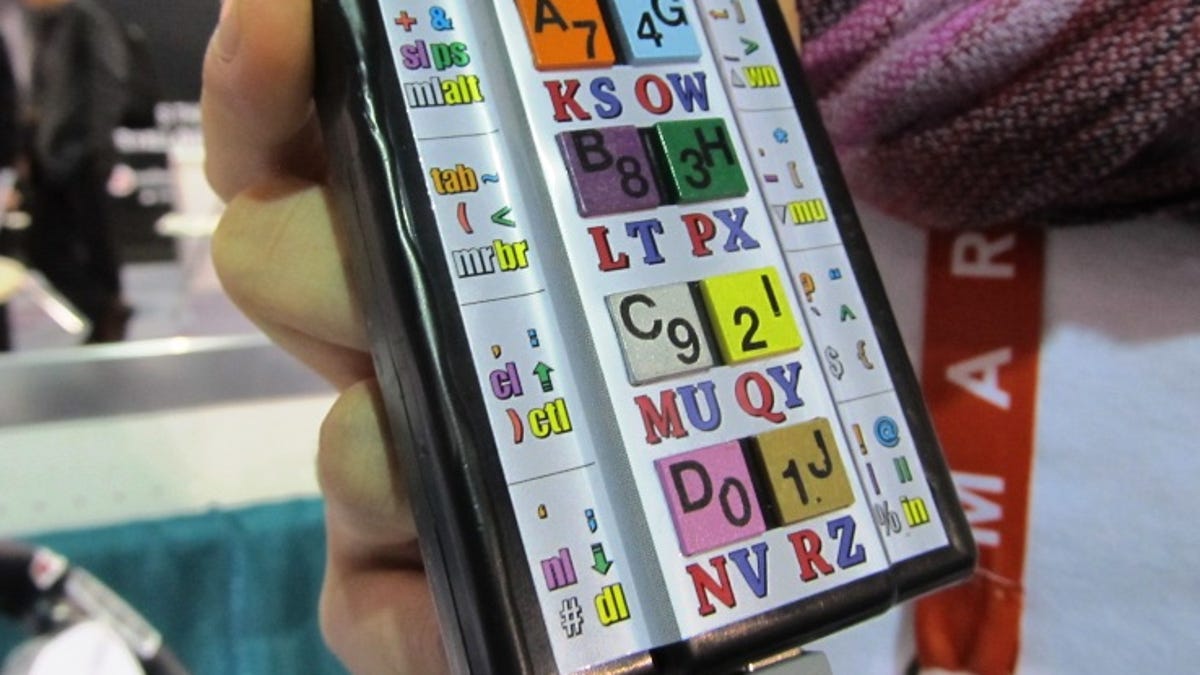Junk your QWERTY for this 10-key keyboard
DecaTxt is a handheld mobile text input device that's logical and fairly simple. Just don't expect to master it quickly.

LAS VEGAS--The QWERTY keyboard you're using has a basic layout that dates from the 1870s Sholes and Glidden typewriter. Why the heck are you still using it?
If you're always typing on the go, on-screen and compact QWERTY keyboards can be a real pain when writing a critical e-mail, text, or tweet. Florida-based In10did thinks it has an ideal solution with this compact, touch-type micro keyboard with wireless Bluetooth connectivity.
DecaTxt has a completely different key setup than a QWERTY keyboard, and it takes some time to get your head around it.
The palm-size device shown off at CES 2013 shrinks the standard keyboard to 10 keys, one for each finger, but it can be used with only one hand. With various key combinations, they allow you to input over 100 keystrokes, and all the characters on a standard board.
When pressed alone, the 10 keys produce the letters J, I, H, G, F, E, A, B, C, and D. Using your thumb or index finger to hold down one key while pressing another, however, opens up the rest of the alphabet.
Using your middle or ring fingers to shift buttons lets you input a range of alphanumeric characters as well as commands like print screen or page up/down.
It's a relatively simple, logical mapping system, and could be a lot more convenient than going through submenus on a smartphone to find the character you need. But getting used to it is no cakewalk.
I could barely type "hello" when I tried out DecaTxt at In10did's booth at CES; most users will need a week to get the knack. Check it out in the demo vid below.
But a young woman who had been playing around with it for less than a day came by and demoed it impressively.
In10did says kids are much quicker learners with DecaTxt, and the fastest they've seen someone type with it was about 30 words per minute; professional typists using QWERTY boards generally type at least 50 words per minute.
Proficient users can type with one hand using DecaTxt, for instance holding it in a pocket or against the waist area.
Inventor Wayne Rasanen says he can type 15 to 20 words per minute with it using one hand and not looking at the device.
"The QWERTY keyboard is 144 years old," says Rasanen, a freelance TV producer and president of The Tampa Bay Inventors Council.
"It was never really designed for mobile technology, and we needed something that made more sense for what we're currently using. We wanted something that has a smaller profile, something you could touch-type with easily."
Rasanen is also working on prototype versions for game controllers and steering wheels so you can type messages while keeping your eyes on the screen or the road, respectively.
In10did expects to sell the patented DecaTxt for $69 for the cable version or $99 for the wireless Bluetooth variety. (Your PC will recognize both as keyboards when connected.) The company is still looking for a manufacturer. Who's going to help toss 19th-century QWERTY boards into the dustbin of history where they belong?

